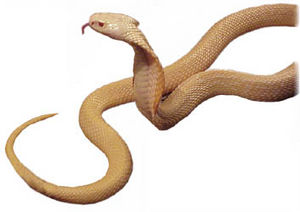Snakes have a typical reptilian nervous system.
Brain
The brain is elongate and consists of forebrain (telencephalon and diencephalon) and brain stem (midbrain and hindbrain). The most significant difference to mammals and birds is the presence of the dorsal ventricular ridge in the telencephalon. The auditory portion of the midbrain appears better developed than would be expected. The tangential vestibular nucleus is well developed. The optic lobes of the midbrain receive primary input from the eye and secondarily from olfactory and auditory centres. The medulla of the hindbrain is better developed than that of lizards and partially encloses the large fourth ventricle. There is no true subarachnoid space in reptiles, which is an important consideration if attempting to collect cerebrospinal fluid.
Spinal cord
The spinal cord extends the length of the vertebral column to the tip of the tail and gives rise to dorsal (sensory) and ventral (motor) roots at each vertebral segment. The sympathetic fibres are not distinct from spinal nerves in the trunk. There are locomotor centres in the spinal cord. Recovery from spinal cord injury may therefore a better prognosis in reptiles than in mammals.
| This article has been peer reviewed but is awaiting expert review. If you would like to help with this, please see more information about expert reviewing. |
Error in widget FBRecommend: unable to write file /var/www/wikivet.net/extensions/Widgets/compiled_templates/wrt662b110dd0b618_45202235 Error in widget google+: unable to write file /var/www/wikivet.net/extensions/Widgets/compiled_templates/wrt662b110dd3ea60_14394924 Error in widget TwitterTweet: unable to write file /var/www/wikivet.net/extensions/Widgets/compiled_templates/wrt662b110dd6eb31_30395919
|
| WikiVet® Introduction - Help WikiVet - Report a Problem |
